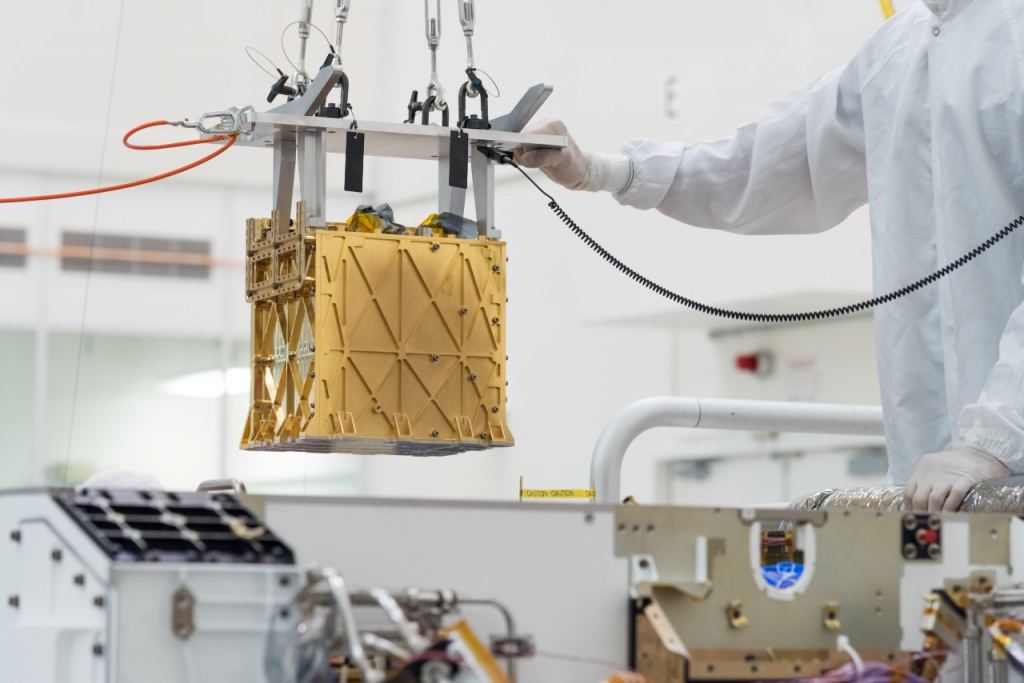When the first humans reach Mars, they’ll probably live in habitats that were there ahead of time or in habs made from their landers. Eventually, though, if people are going to settle on Mars in large numbers, they’ll need to become self-sufficient. A group of researchers at Swinburne University in Melbourne, Australia is looking at ways to make it happen. Their goal is in-situ resource utilization on the planet for solutions to building out the materials needed for Mars cities. They’ve come up with a proposal to produce metals for use on Mars, using only what’s available on the planet. It’s the first detailed study of its kind focused on metal production at another world. It has further implications for colonies on the Moon, as well.
Why make metals, particularly iron, on Mars when there’s plenty on Earth? It’s a matter of economics and accessibility. Space launches off Earth are expensive. It can cost anywhere from a few thousand dollars per kilogram of payload to nearly $60,000 per kilogram to get stuff out of Earth’s gravity well. If the payload contains people and materials bound for Mars, that can get spendy very quickly. Sure, the early missions will contain everything people need to live on the Red Planet. They’ll transport food, oxygen supplies, and so on. But, for long-term colonies and science bases, it’s pretty clear that in-situ resource utilization is the wave of the future. It’s cheaper, and in the long run, more sustainable. And, Mars does have resources for future inhabitants to use.
Think about it. A colony on Mars needs homes, labs, and equipment for creating oxygen and harvesting water, growing food, and making fuels. While some plastics could be useful as part of the mix, much of what settlers will need requires metals. And, bringing them from Earth will not always be possible. It’s also not likely that asteroid mining will provide a permanent answer. At least not in the short term. So, going “local” is the best solution.
In-situ Resource Utilization on Mars
In Australia, Swinburne professor Akbar Rhamdhani and his team began looking at ways to produce metal on Mars and recently published a paper about their ideas. Basically, without assuming the existence of metal deposits on the Red Planet, they developed a process that would take processed air from the Martian atmosphere, dirt from the surface, and concentrated sunlight, and come up with a method to create metallic iron. Solar energy provides the heat source for this “smelting” operation, while cooled CO gas provides carbon. CO itself is a by-product of oxygen production in the Martian atmosphere. We already know that oxygen can be produced on Mars through artificial means. The Mars Perseverance rover’s Mars Oxygen In-situ Resource Utilization Experiment (MOXIE) has already done it. It’s a prototype for oxygen-producing equipment people will need on the planet.
 The MOXIE unit is being placed into the Perseverance rover. Courtesy NASA/JPL.
The MOXIE unit is being placed into the Perseverance rover. Courtesy NASA/JPL.
Given those resources and the results from MOXIE, Rhamdani’s team came up with a metal extraction process coupled with an oxygen generation plant based on the MOXIE design. The whole assembly would produce oxygen and iron alloy. Those could then be shaped into the metals needed for Mars colony infrastructure.
Rhamdhani points out the many uses for the resulting technology for future Mars inhabitants. “We would like to develop a metal extraction process on Mars that is truly utilizing in-situ resources—without bringing reactants from Earth—to support further human mission and development on Mars,” he said. “If you wanted to build something large on Mars without having to pay to launch everything from Earth (think large satellites, mars colonies, refueling depots and more), this could be a very valuable process.”
From Theory to Reality
The next step for the team is a cooperative venture with the Commonwealth Scientific and Industrial Research Organisation (CSIRO), which is Australia’s National Science Agency. They will be developing the technology further, which could be very useful beyond Mars. According to Swinburne Director of the Space Technology Institute, Alan Duffy, this research is part of a larger CSIRO support of missions to the Moon, as well as to Mars. “They will require the use of the resources of the Moon and Mars to make that feasible,” he said. “We are using Swinburne’s expertise and industry partnerships in resource extraction and processing to help make NASA’s vision of astronauts walking on the Red Planet that little bit easier. This work is one small step for metal processing, that can make a giant leap for humanity building off-world.”
For More Information
Researchers aim to turn Martian air, dirt and sunlight into iron
Metals extraction on Mars through carbothermic reduction

